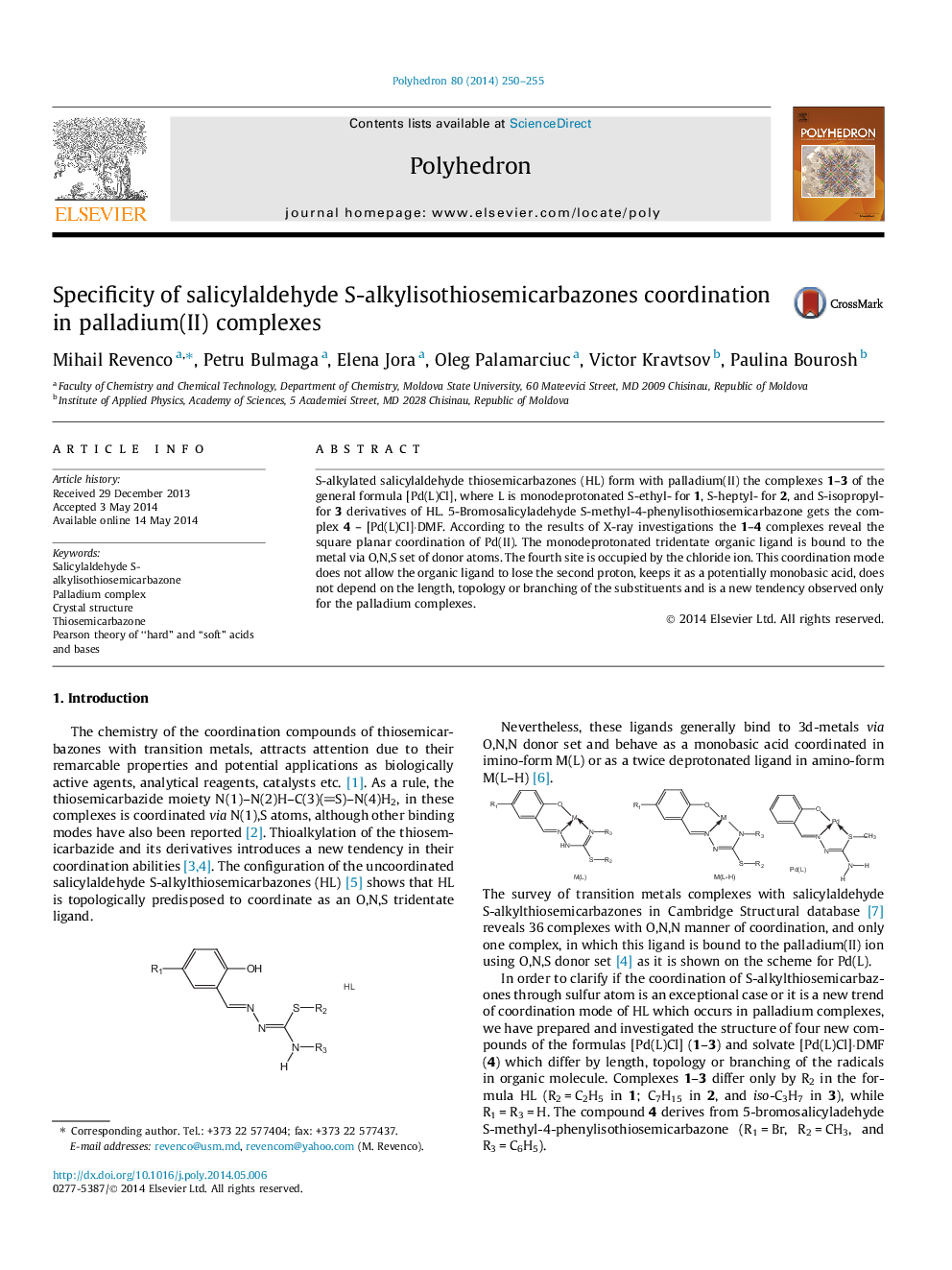| Article ID | Journal | Published Year | Pages | File Type |
|---|---|---|---|---|
| 1335307 | Polyhedron | 2014 | 6 Pages |
S-alkylated salicylaldehyde thiosemicarbazones (HL) form with palladium(II) the complexes 1–3 of the general formula [Pd(L)Cl], where L is monodeprotonated S-ethyl- for 1, S-heptyl- for 2, and S-isopropyl- for 3 derivatives of HL. 5-Bromosalicyladehyde S-methyl-4-phenylisothiosemicarbazone gets the complex 4 – [Pd(L)Cl]·DMF. According to the results of X-ray investigations the 1–4 complexes reveal the square planar coordination of Pd(II). The monodeprotonated tridentate organic ligand is bound to the metal via O,N,S set of donor atoms. The fourth site is occupied by the chloride ion. This coordination mode does not allow the organic ligand to lose the second proton, keeps it as a potentially monobasic acid, does not depend on the length, topology or branching of the substituents and is a new tendency observed only for the palladium complexes.
Graphical abstractSalicylaldehyde S-alkylisothiosemicarbazones (HL) are coordinated as tridentate monodeprotonated ONS ligands in the palladium complexes of the general formula [Pd(L)Cl].Figure optionsDownload full-size imageDownload as PowerPoint slide
